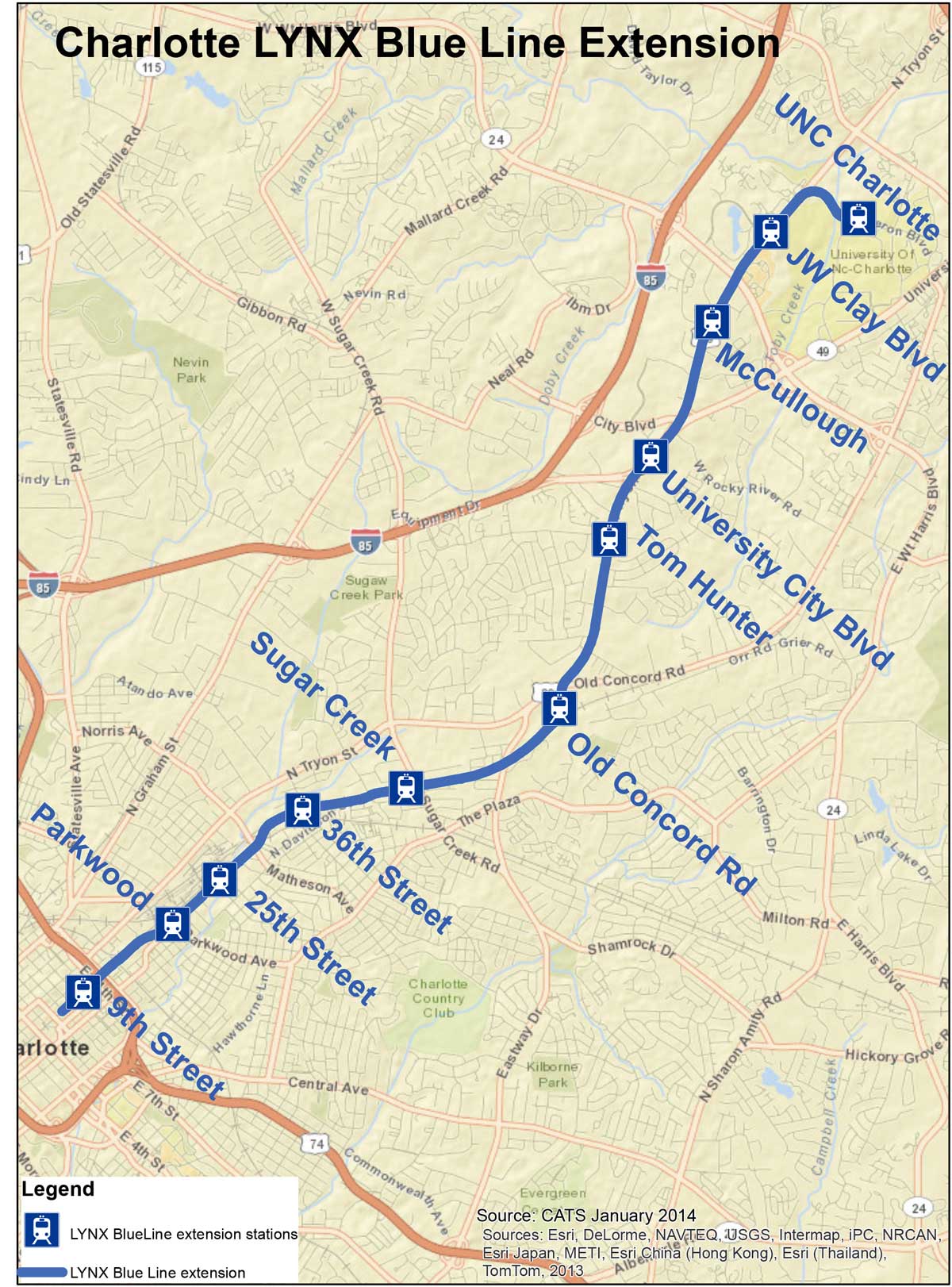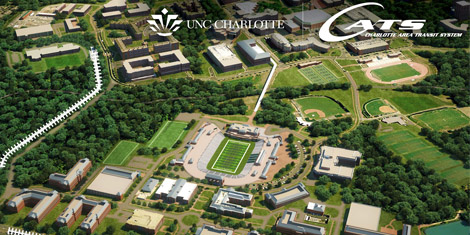By Dave Vieser. Unlike the first CATS Blue Line that generated millions of dollars in nearby development on Charlotte’s south side, the potential for similar growth near the new 9.3 mile northeast extension has developers concerned. While portions of the line will traverse areas prime for expansion now, it may be decades before all segments realize significant growth.
The northeast extension, with a price tag of $1.1 billion, is expected to open in 2017, carrying some 25,000 projected daily passengers through the NoDa section of Charlotte, and north to UNCC. What’s in between has some planners making more modest predictions for development.
 “This extension is going to be different than the South Line,” said Fitzhugh Stout, senior managing director in the Charlotte office of Integra Realty Resources. “I just don’t anticipate the kind of activity you saw in the South End. It’s going to be more moderate.”
“This extension is going to be different than the South Line,” said Fitzhugh Stout, senior managing director in the Charlotte office of Integra Realty Resources. “I just don’t anticipate the kind of activity you saw in the South End. It’s going to be more moderate.”
Simultaneously, trends around development favor close-in locations, more so than suburban locales.
Stout studied the northeast extension’s development impact for the city. “There are certain pockets along that route which have evidence of decline such as retail at Sugar Creek Road and North Tryon Street.”
City and CATS officials acknowledge the contrast between the two lines. However, they still feel the development potential along the line is significant.
“The volume of development that we are seeing along the northeast extension has increased substantially over the last six months,” said Tina Votaw, development specialist at CATS. “We feel this reflects the increased interest of locating adjacent to rail as an important competitive market advantage.”
The new line will have 11 planned stations and CATS forecast some 10,000 new housing units, 4 million square feet of office space and over a million square feet of retail.
Planners have informally sliced the line’s development potential into three segments: NoDa on the south end, the University area on the north, and a lengthy stretch in between.
Even though it will be several years before trains start running, development is already off to a strong start in NoDa (North of Davidson). NoDa, Charlotte’s unofficial historic arts and entertainment district, has a diverse mix of residents enjoying the arts, live music, craft beers, restaurants, custom gifts and even tattoo parlors. Stout says it’s a perfect area for light rail.
“I believe the area that will see the highest concentration of redevelopment will occur between NoDa and uptown in proximity to the LYNX light rail line where revitalization is already under way,” Stout said.
That growth includes a number of property owners who have already sought rezoning from the city so they can use their land for mixed use, rather than the previous industrial-based zoning.
On the north end in the University area, the line will run in the median on North Tryon Street. A walkable town center with wide sidewalks and shopper-friendly retail such as Birkdale Village is envisioned.
Most planners agree that NoDa and the University area will be two strong development anchors for the line. Not so much for the stops between them. “The area that will see the least development is along North Tryon Street where the light rail shifts to the center of the street and existing buildings still have a remaining economic life,” said Stout.
Most planners agree that it could be 10 years to 20 years or even longer before development eventually occurs in that section of the new line.
Another wild card is a potential slowdown in apartment construction, which could impact the number of housing units to be built, at least temporarily.
Still, the overall feeling about development near the northeast extension is one of guarded optimism.


Discussion
No comments yet.